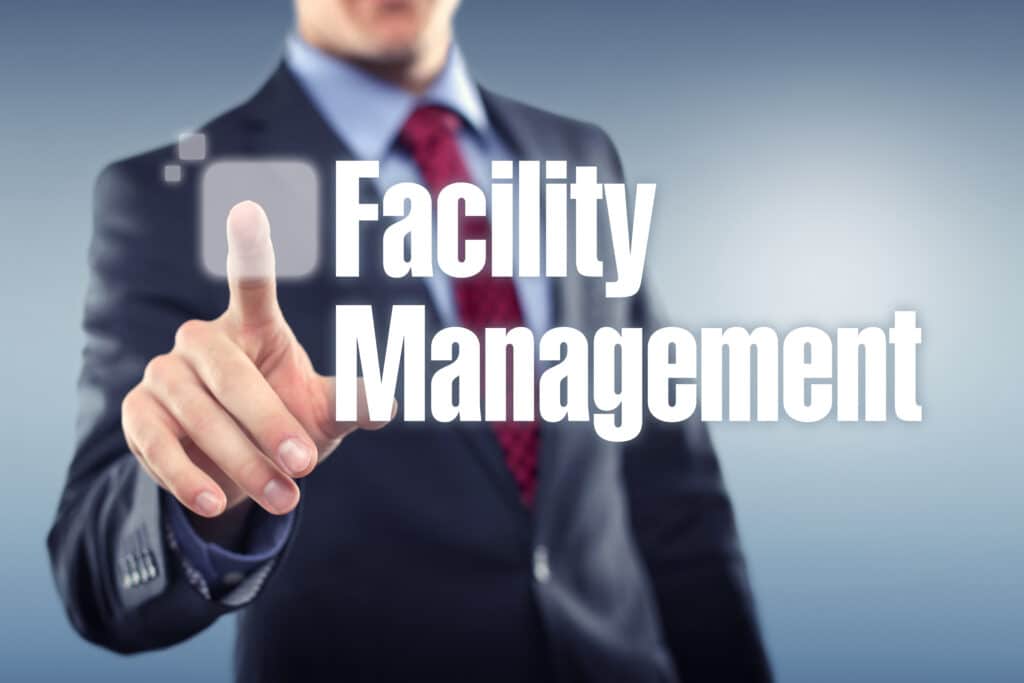The Role of Total Facility Management in Ensuring Building Safety and Compliance
Wiki Article
Leading Benefits of Total Facility Management for Streamlined Operations
Total Facility Management (TFM) stands for a strategic approach to enhancing functional performance by incorporating various services, such as upkeep and security, under a unified management structure. The concern remains: what details benefits can companies harness from embracing TFM, and exactly how might these advantages transform their functional landscape?Improved Operational Effectiveness
Enhanced functional effectiveness is a key advantage of carrying out total facility management (TFM) techniques. TFM includes a detailed technique to managing a center's resources, procedures, and facilities, eventually simplifying procedures. By combining different services-- such as upkeep, area, security, and cleansing management-- TFM boosts and reduces redundancies coordination among different functional features.
The combination of innovation further magnifies this performance. Advanced facility management systems supply real-time information analytics, allowing facility managers to make informed decisions that enhance process and source allowance. Predictive upkeep strategies, as an example, anticipate equipment failures before they happen, decreasing downtime and extending asset life-span.
Furthermore, TFM promotes standard processes across various divisions, ensuring uniformity and top quality in service distribution. This uniformity minimizes functional disruptions and cultivates a much more collaborative working atmosphere. Therefore, staff members can concentrate on their core duties, driving productivity and enhancing overall efficiency.

Expense Decrease and Savings
Carrying out total facility management (TFM) not only boosts operational efficiency however likewise significantly contributes to set you back reduction and cost savings. By settling different solutions under a single management framework, organizations can get rid of redundancies and improve procedures, consequently decreasing operational costs. TFM makes it possible for far better procurement techniques, allowing companies to negotiate bulk investing in contracts with vendors and provider, leading to reduced prices.Additionally, TFM emphasizes precautionary upkeep, which minimizes unanticipated malfunctions and prolongs the life expectancy of vital devices. This proactive method not just decreases repair service expenses yet likewise enhances the dependability of facilitiess, ensuring nonstop operations. Furthermore, energy efficiency initiatives, often a crucial focus of TFM, bring about substantial savings on utility costs, as facilitiess are optimized for lowered power usage.
Improved Source Management
Reliable source management is a cornerstone of total facility management (TFM), allowing organizations to maximize the usage of their properties and labor force. By carrying out TFM approaches, companies can adequately assess their resource allowance, making sure that every property is used effectively and efficiently. This all natural technique permits for the recognition of underperforming resources and the potential for reallocation or improvement.In addition, TFM facilitates the integration of technology for real-time tracking of sources, which assists in predicting upkeep requirements and preventing costly downtime. By leveraging information analytics, organizations can make informed choices concerning source implementation, eventually boosting productivity and lowering waste.
In addition, TFM promotes a culture of constant enhancement, urging groups to frequently assess and improve their source management methods. Total Facility Management. This proactive position not only decreases functional disturbances but additionally fosters innovation, as employees are empowered to recommend enhancements based on their direct experiences with resource use
Streamlined Interaction Channels
In total facility management, streamlined interaction networks play a vital function in fostering cooperation and efficiency blog throughout groups. Effective communication ensures that all stakeholders, consisting of facility managers, maintenance team, and service companies, are lined up with organizational objectives and operational demands. By developing clear lines of communication, teams can swiftly resolve issues, share updates, and carry out options, consequently minimizing downtime and boosting productivity.With systematized communication platforms, info is easily available, permitting real-time updates on maintenance demands, source allowance, and project timelines. This transparency not only decreases misconceptions yet also equips workers to make educated decisions promptly. Moreover, streamlined communication promotes better coordination throughout emergency situations, making certain that all workers are educated and can respond promptly.
Increased Concentrate On Core Activities
A crucial benefit of total facility management article source is the boosted emphasis on core tasks, permitting companies to focus on their primary service purposes - Total Facility Management. By contracting out non-core functions such as cleansing, maintenance, and security, firms can reroute their sources and power in the direction of critical campaigns that straight add to their affordable benefit and developmentTotal facility management integrates various operational tasks under a solitary umbrella, cultivating performance and decreasing redundancy. This consolidation not only streamlines procedures yet additionally boosts liability, making sure that every element of the facility operates sympathetically without drawing away interest from what genuinely matters-- core company functions.
Furthermore, this approach makes it possible for staff members to devote their time and efforts to tasks that drive technology and boost client complete satisfaction, rather than obtaining slowed down by operational challenges. With a reliable facility management companion taking care of daily operations, companies can accomplish greater dexterity, respond swiftly to market adjustments, and preserve a sharper concentrate on their objective.
Eventually, increased focus on core tasks brings about enhanced total performance, allowing organizations to reinforce their market placement and satisfy their calculated goals better. - Total Facility Management
Verdict
In conclusion, Total Facility Management substantially boosts functional performance by consolidating important services and leveraging data analytics for notified decision-making. Expense decreases and enhanced source management add to general financial savings, while structured interaction networks foster partnership amongst stakeholders.Total Facility Management (TFM) represents a tactical technique to improving operational effectiveness by integrating various services, such as maintenance and security, under a unified management structure.Boosted functional effectiveness is a main benefit of executing total facility management (TFM) methods. Advanced facility management systems offer real-time data analytics, enabling facility supervisors to make educated decisions that improve operations and source allowance.Executing total facility management (TFM) not only boosts functional effectiveness however also significantly adds to cost reduction and financial savings.Reliable resource management is a cornerstone of total facility management (TFM), making it possible for companies to maximize the use of their assets and workforce.
Report this wiki page